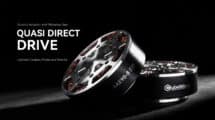The Passive Ankle Exoskeleton for “Reducing the energy cost of human walking using an unpowered exoskeleton” is the single greatest exoskeleton development for the 2015 calendar year! Dr. Greg Sawicki, his team and friends were able to create and test a wearable robot that successfully reduced the metabolic cost of walking for healthy individuals by 7.2 ±2.6%. The metabolic cost measures the oxygen consumption of the user while wearing the exoskeleton. The metabolic rate will go down as the exoskeleton supplies energy to the user but it will also go up from the energy the user has to spend carrying the exoskeleton. An overall decrease in the metabolic rate means that the wearable device is providing more benefit than the cost of wearing it.
Originally published in June of 2015, the Passive Ankle Exoskeleton was an enormous milestone for wearable robotics technology. Below is a presentation that does a better job of explaining the project compared to any article or even the original research letter! The seminar by Dr. Sawicki, lead scientist on the Passive Ankle Exoskeleton was recorded while visiting the University of Michigan Ann-Arbor Mechanical Engineering Department. In this recording, Dr. Sawicki goes into exhausting details of his work on the Passive Ankle Exoskeleton from early inspiration, collaborations, setbacks, successes and future projects. He does a fantastic job explaining this important project!
Why is this project important?
Currently there are two main camps on exoskeleton assisted locomotion: actuated hip-knee vs actuated ankle exoskeletons. There are extremely few actuated hip-knee-ankle exoskeletons (an exoskeleton that supplies power in at least 1 axis of rotation to all three joints). The hip-knee exoskeletons include all of the current commercial rehabilitation exoskeletons: Ekso, ReWalk, Hal, Indego, ExoAtlet, ARKE, Phoenix, AxoSuit, MODO, etc. In the ankle only camp stand the Wyss Institute, Hugh Herr’s group and the work by Dr. Collins and Sawicki (all heavyweights in bionic research and development). The success of the Passive Ankle Exoskeleton will most likely usher a new wave of commercial exoskeletons. The US Army is already testing a soft exosuit that has a similar spring system at the heel of the boot.
Who is Dr. Greg Sawicki?
Dr. Greg Sawicki has a B.S. in Mechanical Engineering from Cornell University (1999), M.S. in Mechanical Engineering from University of California Davis (2001) and a Ph.D. in Human Neuromechanics from the University of Michigan, Ann-Arbor (2007). He is an Associate Professor of Biomedical Engineering, Associate Director, Rehabilitation Engineering Core and a Director, Human PoWeR (Physiology of Wearable Robotics) Laboratory for the Joint Department of Biomedical Engineering, University of North Carolina at Chapel Hill and North Carolina State University. Dr. Greg Sawicki has worked on ankle exoskeletons since at least 2007. Unlike many other exoskeleton researchers, he has remained focused on developing ankle exoskeletons and his eight years of work in the field is now yielding positive results.
You can find out more about Dr. Sawicki as well as a full list of all of his publications on his NCSU website. He is also a speaker at the upcoming Wearable Robotics Conference, WearRAcon16.
In his presentation, Dr. Greg Sawicki refers to prior projects by Dr. Steve Collins and you can find much more about them here: Carnegie Mellon’s Steve Collins Talks Prosthesis and Exoskeletons
The full research letter to Nature is available for rent or purchase from Macmillan:
Reducing the energy cost of human walking using an unpowered exoskeleton, Steven H. Collins, M. Bruce Wiggin, Gregory S. Sawicki, Nature 522, pg 212-215, June 2015, Nature14288
For the time being the article can also be accessed from the NCSU website here:
Reducing the energy cost of human walking using an unpowered exoskeleton.








1 Comment